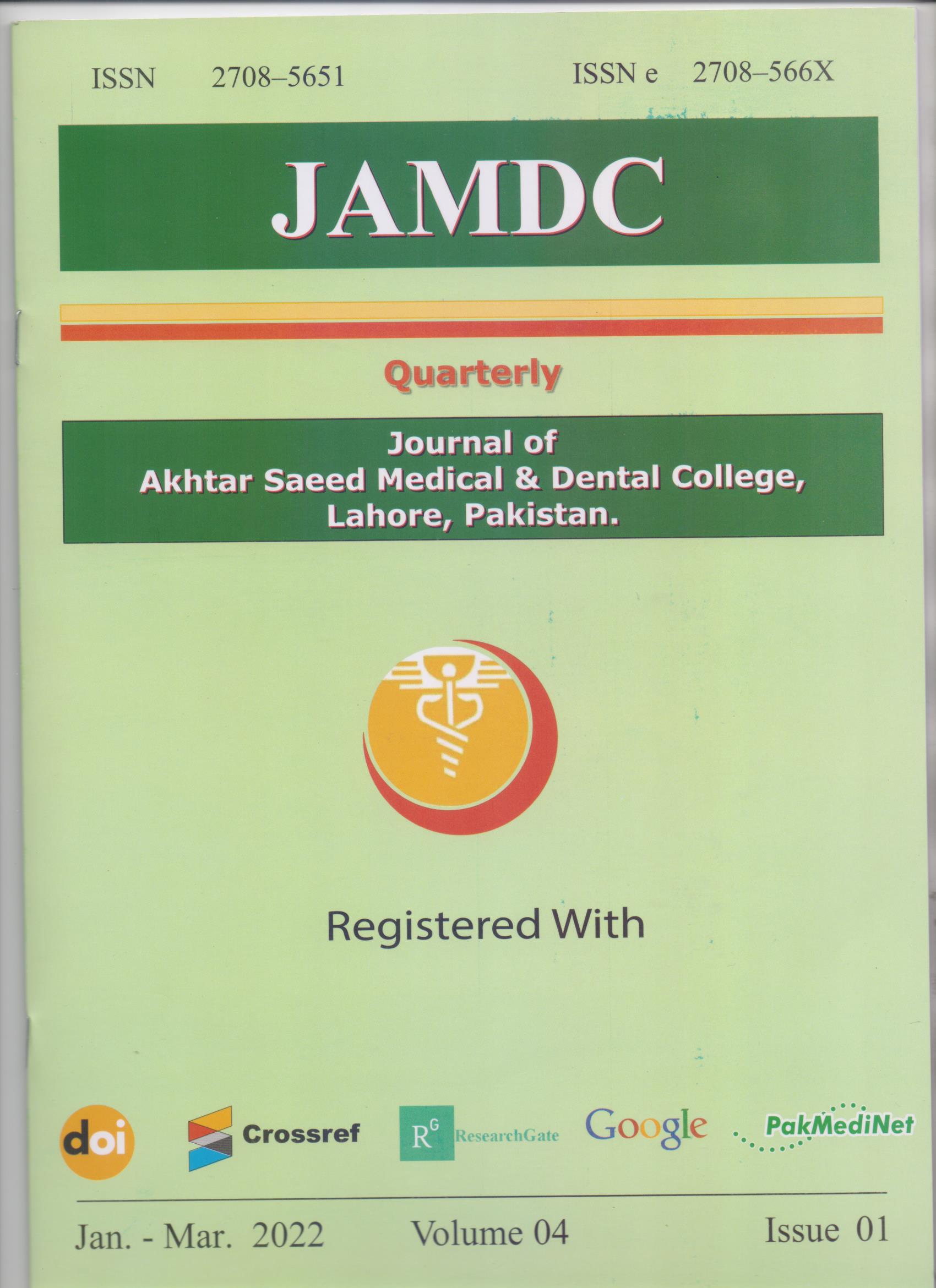Original Articles CORRELATION OF UMBILICAL CORD BLOOD PH IMMEDIATELY AFTER BIRTH IN PATIENTS WITH PRESUMED FETAL DISTRESS TO APGAR SCORE.
Shahlla Kanwal, Madeeha Rashid, Kiren Khurshid Malik, Humaira Saleem, Rubina Sohail
Keywords:
Fetal Distress, Hypoxia, APGAR scoreAbstract
Background
The best parameter to diagnose neonatal distress is an academic assessment of cord blood PH immediately after birth. The detection of pH in the immediate postpartum period can predict neonatal outcomes and will be helpful in the planning of further plans of care. The study aimed to establish co-relation between umbilical cord blood pH immediately after delivery with APGAR score.
Material and Methods
This cross-sectional study was conducted in the Department of Obstetrics & Gynecology, Mumtaz Bakhtawer Hospital, Lahore. This study randomly included 68 full-term pregnant women who presented to the labor room with labor pains. After delivery cord blood was taken in a pre heparinized insulin syringe within one minute of delivery. Maternal demographic features along with gestational age and fetal pH, base deficit, and HCO- 3 levels were noted. The correlation coefficient of pH and APGAR score was also calculated, p-value ≤0.05 was considered statistically significant.
Results
Eighty patients were enrolled in the study, but 70 were confirmed and became part of the research. Later on, 2 patients withdrew their consent for the study. Among 68 patient,48(70.5%) patient had non-reactive CTG (pathological CTG) and 20(29.4%) patients had meconium-stained liquor with normal CTG. LSCS was done in 56(82.35%) mothers while 12(17.6%) underwent spontaneous vaginal delivery (SVD). Among these 56 females14 (25%) have grade 2 meconium and 42(75%) have non-reactive CTG. Among 12 patients 6(50%) had non-reactive CTG and 6(50%) had Grade 2 meconium. Four 4(5.8%), neonates had acidosis along with an APGAR score < 7. The mean cord blood pH was 7.24±0.15. Only two needed neonatal intensive care unit (NICU) admission. Among Sixty-four (94.11%) with APGAR >7 two neonates with meconium needed observation for 24 hours and the remaining babies after 6 hrs of observation were handed over to the mother and cared for by the mother. There was a positively weak relationship observed between cord blood pH and
APGAR score (r=0.645), however, it was statistically non-significant P > 0.05.
Conclusion
Acidic pH leads to poor APGAR score and birth asphyxia. Early assessment and diagnosis can improve fetal outcomes. Meconium-stained liquor and non-reactive pathological CTG had no significant correlation with neonatal outcomes. These two parameters result in unnecessary cesarean section.
